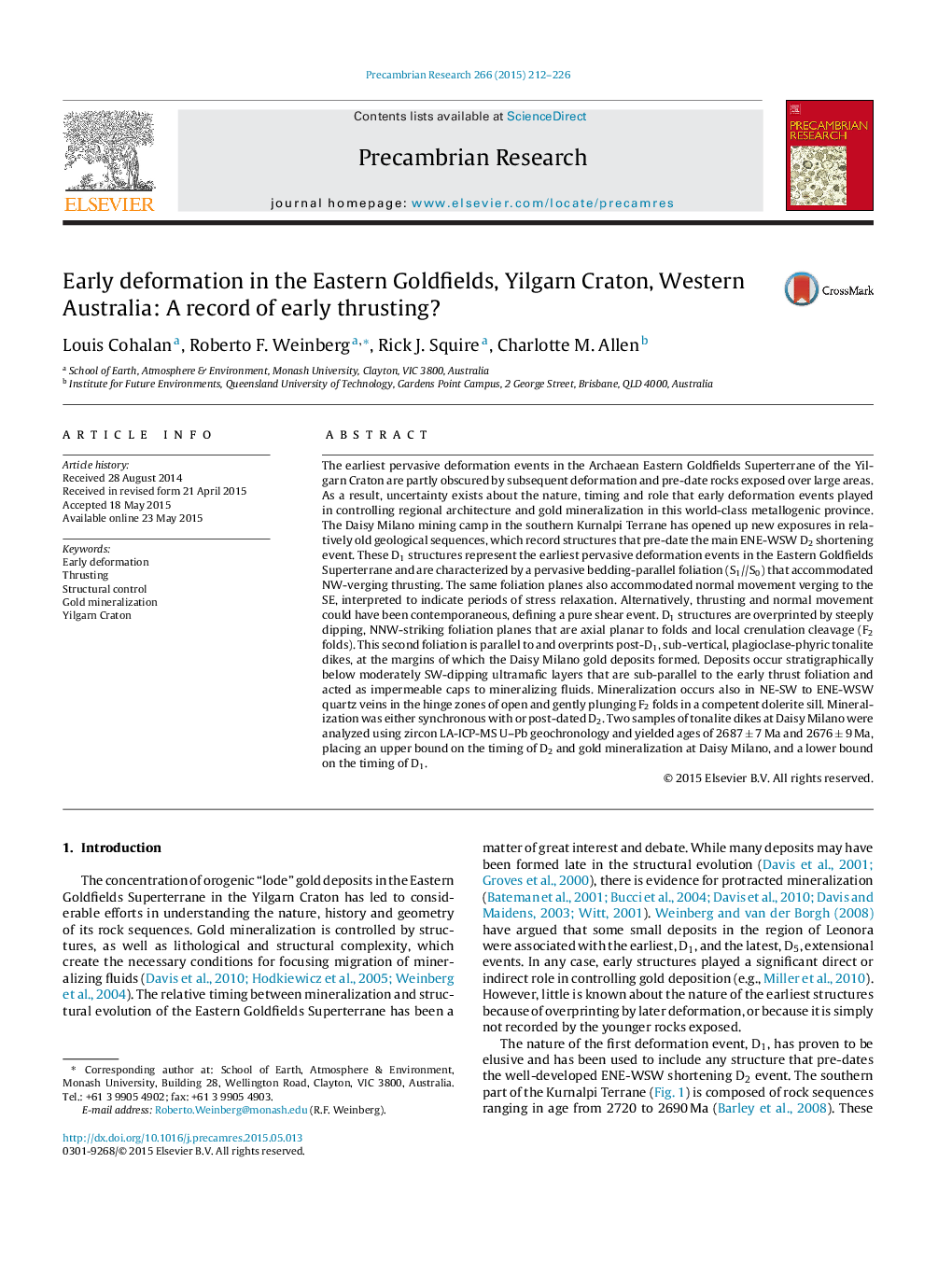| کد مقاله | کد نشریه | سال انتشار | مقاله انگلیسی | نسخه تمام متن |
|---|---|---|---|---|
| 4722539 | 1639609 | 2015 | 15 صفحه PDF | دانلود رایگان |

• Early deformation in the Eastern Goldfields is ill-defined due to later overprint.
• D1 preserved in Daisy Milano mining camp is characterized by thrusting to NW.
• Thrusting is interrupted by periods of stress relaxation and movement inversion.
• Thrusting predates ∼2680 Ma porphyry intrusions and upright D2 folding.
• Gold post-dates D1 and is controlled by the architecture set-up during D1.
The earliest pervasive deformation events in the Archaean Eastern Goldfields Superterrane of the Yilgarn Craton are partly obscured by subsequent deformation and pre-date rocks exposed over large areas. As a result, uncertainty exists about the nature, timing and role that early deformation events played in controlling regional architecture and gold mineralization in this world-class metallogenic province. The Daisy Milano mining camp in the southern Kurnalpi Terrane has opened up new exposures in relatively old geological sequences, which record structures that pre-date the main ENE-WSW D2 shortening event. These D1 structures represent the earliest pervasive deformation events in the Eastern Goldfields Superterrane and are characterized by a pervasive bedding-parallel foliation (S1//S0) that accommodated NW-verging thrusting. The same foliation planes also accommodated normal movement verging to the SE, interpreted to indicate periods of stress relaxation. Alternatively, thrusting and normal movement could have been contemporaneous, defining a pure shear event. D1 structures are overprinted by steeply dipping, NNW-striking foliation planes that are axial planar to folds and local crenulation cleavage (F2 folds). This second foliation is parallel to and overprints post-D1, sub-vertical, plagioclase-phyric tonalite dikes, at the margins of which the Daisy Milano gold deposits formed. Deposits occur stratigraphically below moderately SW-dipping ultramafic layers that are sub-parallel to the early thrust foliation and acted as impermeable caps to mineralizing fluids. Mineralization occurs also in NE-SW to ENE-WSW quartz veins in the hinge zones of open and gently plunging F2 folds in a competent dolerite sill. Mineralization was either synchronous with or post-dated D2. Two samples of tonalite dikes at Daisy Milano were analyzed using zircon LA-ICP-MS U–Pb geochronology and yielded ages of 2687 ± 7 Ma and 2676 ± 9 Ma, placing an upper bound on the timing of D2 and gold mineralization at Daisy Milano, and a lower bound on the timing of D1.
Journal: Precambrian Research - Volume 266, September 2015, Pages 212–226